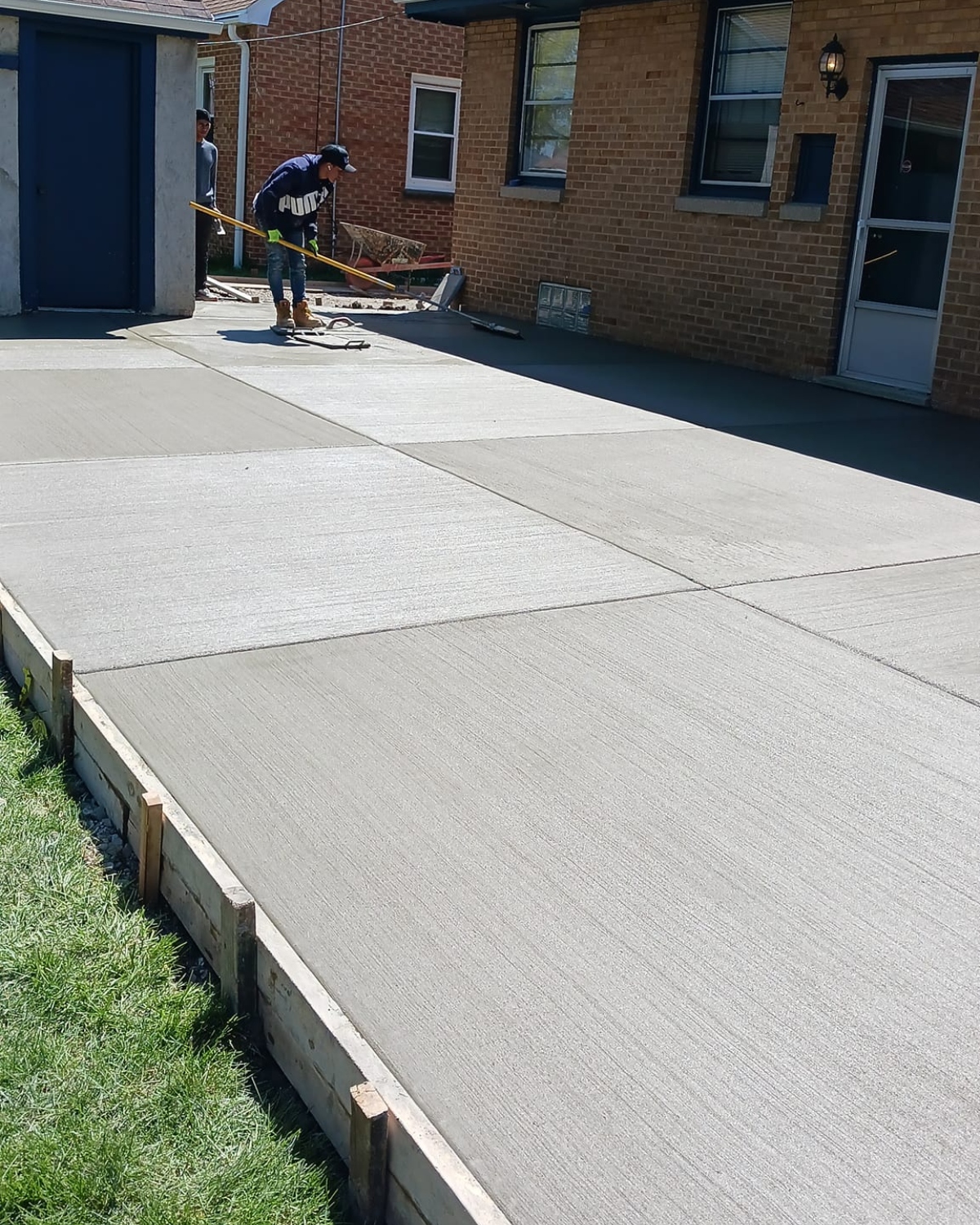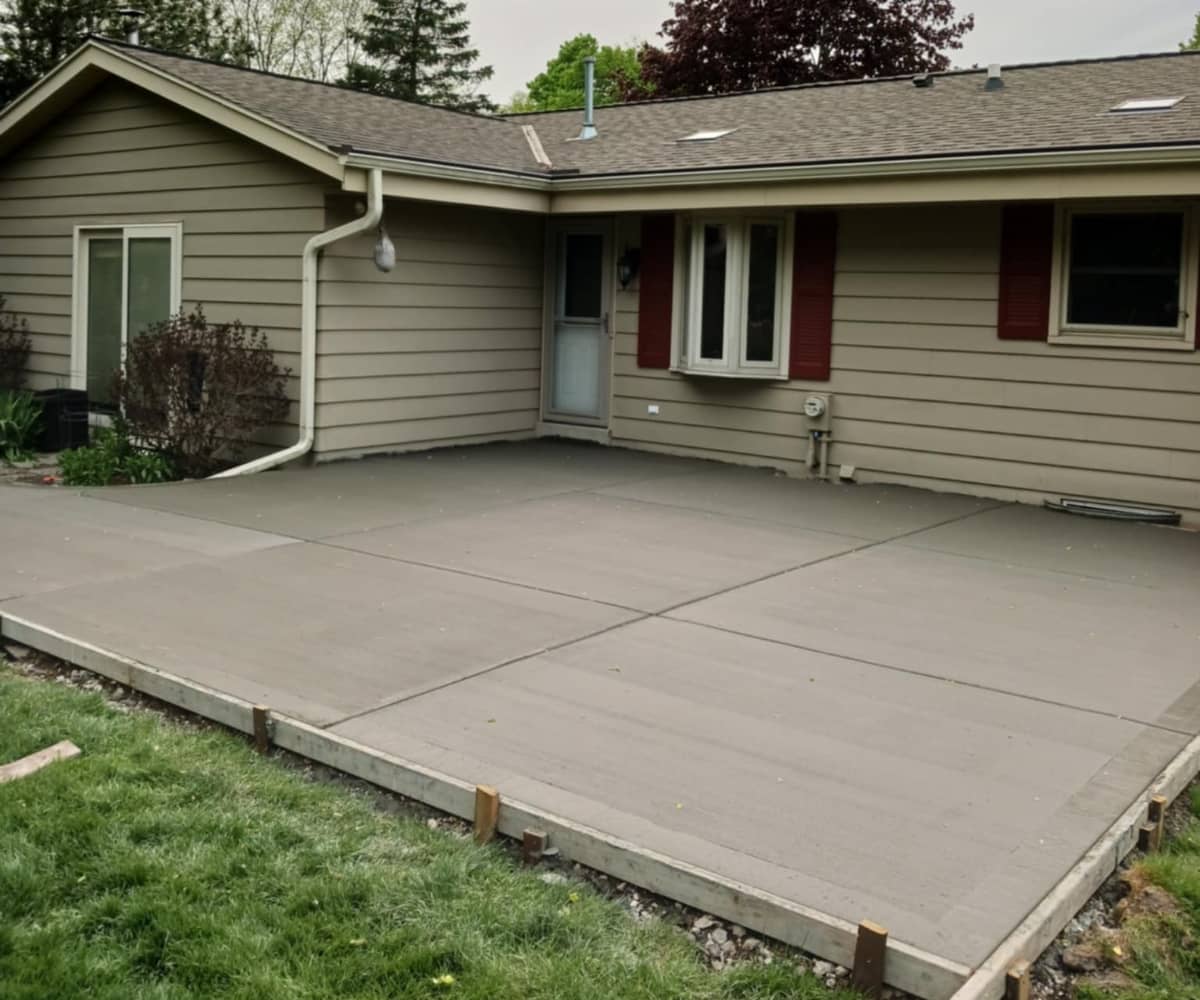A concrete patio is a great addition to any home, especially for those who like to spend time hanging out in their backyard. You can use your patio as an extended living space for relaxing and grilling with family and friends.
Concrete patios can also help to increase your home’s value and attractiveness, so there are plenty of reasons why people choose to get one installed in the backyard. However, cracks can affect the aesthetics, and they can form more easily than you’d think.
If you’ve started to notice damage on your patio, here are a couple of reasons why your concrete patio might be cracking and why it’s a good idea to hire a professional company for to install or repair your concrete patio.
5 Reasons Your Concrete Patio Is Cracking
1. Ground Settlement
When the ground below the concrete starts to shift around, this becomes one of the most common causes for concrete cracks. This essentially means that the sub-base underneath your slabs isn’t sufficient, which means the ground can settle unevenly over time.
This can be due to the type of soil (whether that’s clay, chalk, or silt), as each one requires different material conditions. It can also be that the sub-base underneath wasn’t compacted properly before the slabs were laid down by your contractor.
Eventually, this can lead to movement of the paving, which can cause visible cracks or even raised edges as the slabs begin to shift. Your new contractor will either need to fully replace the slab or attempt to fix the uneven slope.
2. Poor Concrete Mixture
Issues with the initial mixture can lead to both short-term and long-term problems for your patio. Slight miscalculation when mixing the cement (especially for those who aren’t following the manufacturer's instructions) can cause a poor mixture.
Improper mixing or opting for a lower-quality concrete can lead to visible hairline cracks in a new concrete slab. It’s best to choose the highest concrete quality to avoid any issues, even if it requires spending a bit more. You don't want your new concrete to look damaged after just a few months.
Applying the cement mixture in poor weather conditions, especially during the rainy or winter months, can also cause plenty of issues all on its own. This is due to the increase in moisture, which can cause the cement mix to take longer to dry. That’s why it's important to hire a professional concrete company that won’t cut any corners and will find a good time to pour your concrete.
3. Ground Sinkage and Heave
Ground sinkage and heaving can cause damage to your concrete patio over time. This occurs when the soil absorbs the moisture, leading it to expand and push the material above.
Ground sinkage and heaving are more common with certain soil types, such as clay, since it’s prone to water absorption. Unfortunately, this type of movement exerts a lot of pressure and force, so concrete slabs can crack with ease.
The soil can also alternate between expanding and shrinking depending on the weather conditions, so your patio can go through a cycle of rising and dropping, which isn’t good for the structural integrity of the slab.
4. Extreme Weather Conditions
Environmental factors can have more of an impact on your patio than you think. Temperature changes create freeze-thaw cycles and bad weather that leads to moisture can weaken the concrete internally or through external cracks.
Wisconsin often experiences many freeze-thaw cycles due to the variations in temperature between the seasons, from spring to winter. In the wetter months, excessive moisture can also create problems. Although concrete is a porous material, water can penetrate the foundation and lead to further structural damage.
Extra precautions must be taken when pouring concrete in hot weather, as rapid water evaporation can lead to reduced strength and surface cracks.
5. Overgrown Tree Roots
Tree roots in the soil from large trees can create several problems. Overgrown roots will search for moisture and nutrients in the soil.
As these tree roots expand, they can wind their way underneath the slabs and push up against the concrete. Not only can these roots cause tripping hazards, but they can also cause the slabs to shift.
It’s a good idea to remove any large trees near your patio to prevent this kind of damage, especially since it can lead to frequent concrete repairs. Otherwise, before you install a concrete patio, try to place it as far away from large trees as you can.
DIY Repair Vs. Pro Repair
When you notice cracks in your concrete patio, you shouldn’t hold off on getting repairs, as the damage can only grow worse. Most homeowners attempt to fix cracks themselves by applying crack filler or caulk to hairline cracks, but that won’t solve the root cause and won’t work for larger cracks.
A concrete repair requires expertise, precision, and planning, which is why it’s often best to hire a professional company. You’ll also want to ensure that the contractor you choose is trustworthy, either through personal recommendations or by looking at their reviews.
Here at Vazquez Construction LLC, our level of craftsmanship and dedication to customer service is shown by our client testimonials. We always do what’s best for our customers and live up to our reputation as your trusted Milwaukee concrete company. Contact us today to receive a free estimate on your project.

